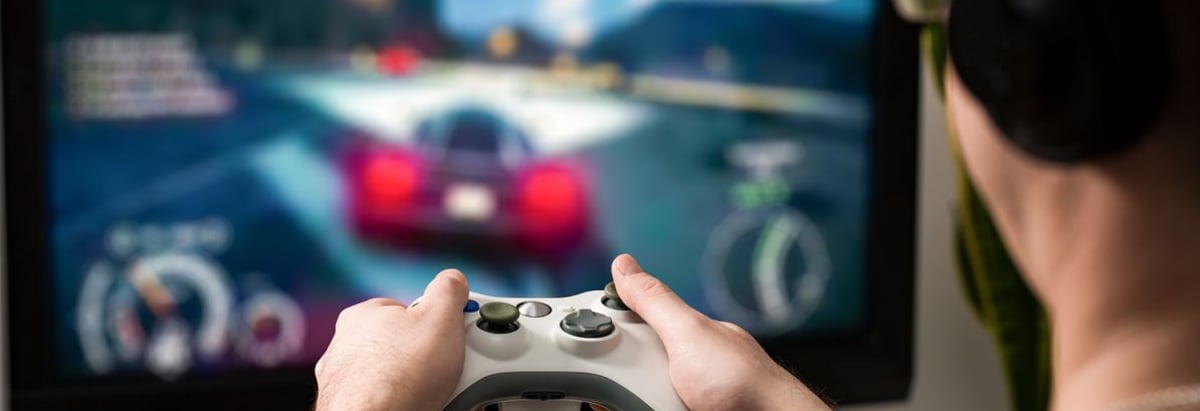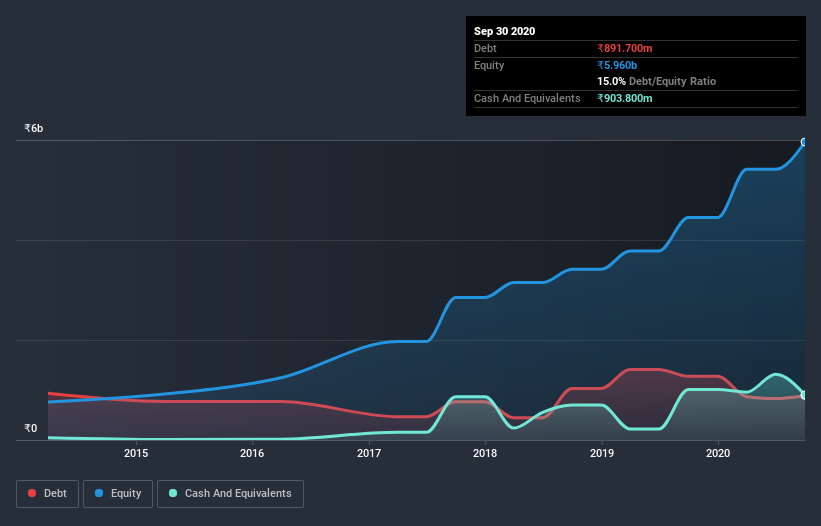- India
- /
- Consumer Durables
- /
- NSEI:DIXON
Here's Why Dixon Technologies (India) (NSE:DIXON) Can Manage Its Debt Responsibly

Some say volatility, rather than debt, is the best way to think about risk as an investor, but Warren Buffett famously said that 'Volatility is far from synonymous with risk.' So it might be obvious that you need to consider debt, when you think about how risky any given stock is, because too much debt can sink a company. We note that Dixon Technologies (India) Limited (NSE:DIXON) does have debt on its balance sheet. But should shareholders be worried about its use of debt?
When Is Debt A Problem?
Debt and other liabilities become risky for a business when it cannot easily fulfill those obligations, either with free cash flow or by raising capital at an attractive price. Part and parcel of capitalism is the process of 'creative destruction' where failed businesses are mercilessly liquidated by their bankers. However, a more usual (but still expensive) situation is where a company must dilute shareholders at a cheap share price simply to get debt under control. Of course, debt can be an important tool in businesses, particularly capital heavy businesses. The first thing to do when considering how much debt a business uses is to look at its cash and debt together.
See our latest analysis for Dixon Technologies (India)
What Is Dixon Technologies (India)'s Net Debt?
The image below, which you can click on for greater detail, shows that Dixon Technologies (India) had debt of ₹847.8m at the end of September 2020, a reduction from ₹1.27b over a year. But on the other hand it also has ₹903.8m in cash, leading to a ₹56.0m net cash position.

How Healthy Is Dixon Technologies (India)'s Balance Sheet?
The latest balance sheet data shows that Dixon Technologies (India) had liabilities of ₹15.4b due within a year, and liabilities of ₹1.44b falling due after that. On the other hand, it had cash of ₹903.8m and ₹10.7b worth of receivables due within a year. So it has liabilities totalling ₹5.24b more than its cash and near-term receivables, combined.
Of course, Dixon Technologies (India) has a market capitalization of ₹138.9b, so these liabilities are probably manageable. But there are sufficient liabilities that we would certainly recommend shareholders continue to monitor the balance sheet, going forward. While it does have liabilities worth noting, Dixon Technologies (India) also has more cash than debt, so we're pretty confident it can manage its debt safely.
The good news is that Dixon Technologies (India) has increased its EBIT by 7.7% over twelve months, which should ease any concerns about debt repayment. There's no doubt that we learn most about debt from the balance sheet. But it is future earnings, more than anything, that will determine Dixon Technologies (India)'s ability to maintain a healthy balance sheet going forward. So if you're focused on the future you can check out this free report showing analyst profit forecasts.
Finally, a company can only pay off debt with cold hard cash, not accounting profits. Dixon Technologies (India) may have net cash on the balance sheet, but it is still interesting to look at how well the business converts its earnings before interest and tax (EBIT) to free cash flow, because that will influence both its need for, and its capacity to manage debt. Over the last three years, Dixon Technologies (India) barely recorded positive free cash flow, in total. While many companies do operate at break-even, we prefer see substantial free cash flow, especially if a it already has dead.
Summing up
We could understand if investors are concerned about Dixon Technologies (India)'s liabilities, but we can be reassured by the fact it has has net cash of ₹56.0m. And it also grew its EBIT by 7.7% over the last year. So we are not troubled with Dixon Technologies (India)'s debt use. The balance sheet is clearly the area to focus on when you are analysing debt. But ultimately, every company can contain risks that exist outside of the balance sheet. Case in point: We've spotted 2 warning signs for Dixon Technologies (India) you should be aware of.
Of course, if you're the type of investor who prefers buying stocks without the burden of debt, then don't hesitate to discover our exclusive list of net cash growth stocks, today.
If you’re looking to trade Dixon Technologies (India), open an account with the lowest-cost* platform trusted by professionals, Interactive Brokers. Their clients from over 200 countries and territories trade stocks, options, futures, forex, bonds and funds worldwide from a single integrated account. Promoted
New: Manage All Your Stock Portfolios in One Place
We've created the ultimate portfolio companion for stock investors, and it's free.
• Connect an unlimited number of Portfolios and see your total in one currency
• Be alerted to new Warning Signs or Risks via email or mobile
• Track the Fair Value of your stocks
This article by Simply Wall St is general in nature. It does not constitute a recommendation to buy or sell any stock, and does not take account of your objectives, or your financial situation. We aim to bring you long-term focused analysis driven by fundamental data. Note that our analysis may not factor in the latest price-sensitive company announcements or qualitative material. Simply Wall St has no position in any stocks mentioned.
*Interactive Brokers Rated Lowest Cost Broker by StockBrokers.com Annual Online Review 2020
Have feedback on this article? Concerned about the content? Get in touch with us directly. Alternatively, email editorial-team@simplywallst.com.
About NSEI:DIXON
Dixon Technologies (India)
Engages in the provision of electronic manufacturing services in India and internationally.
Exceptional growth potential with solid track record.
Similar Companies
Market Insights
Community Narratives



